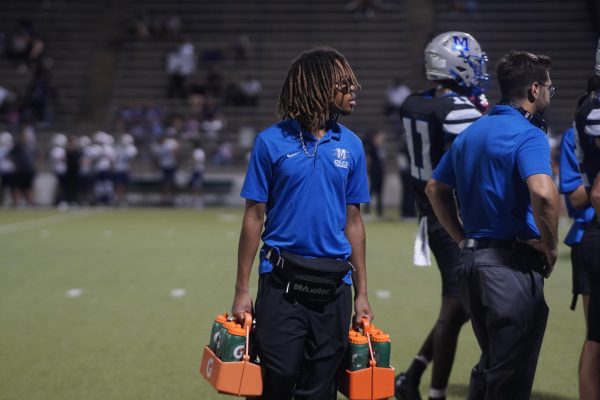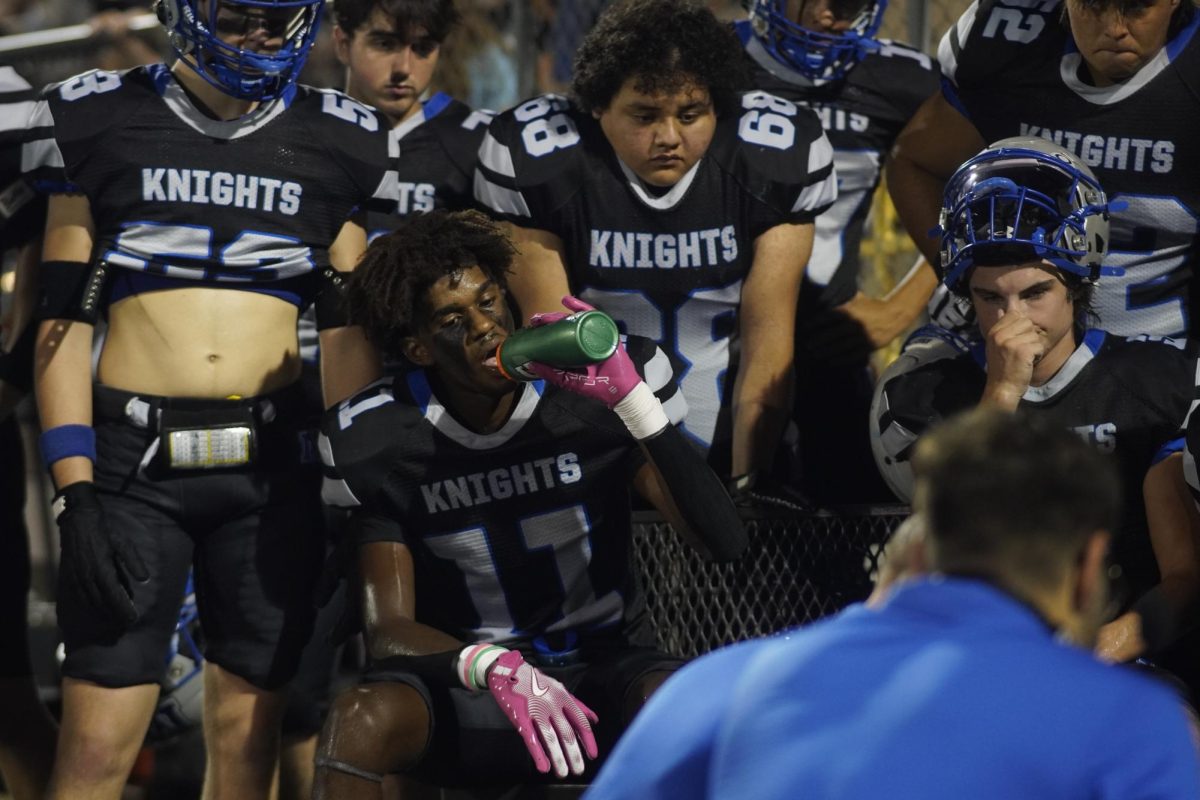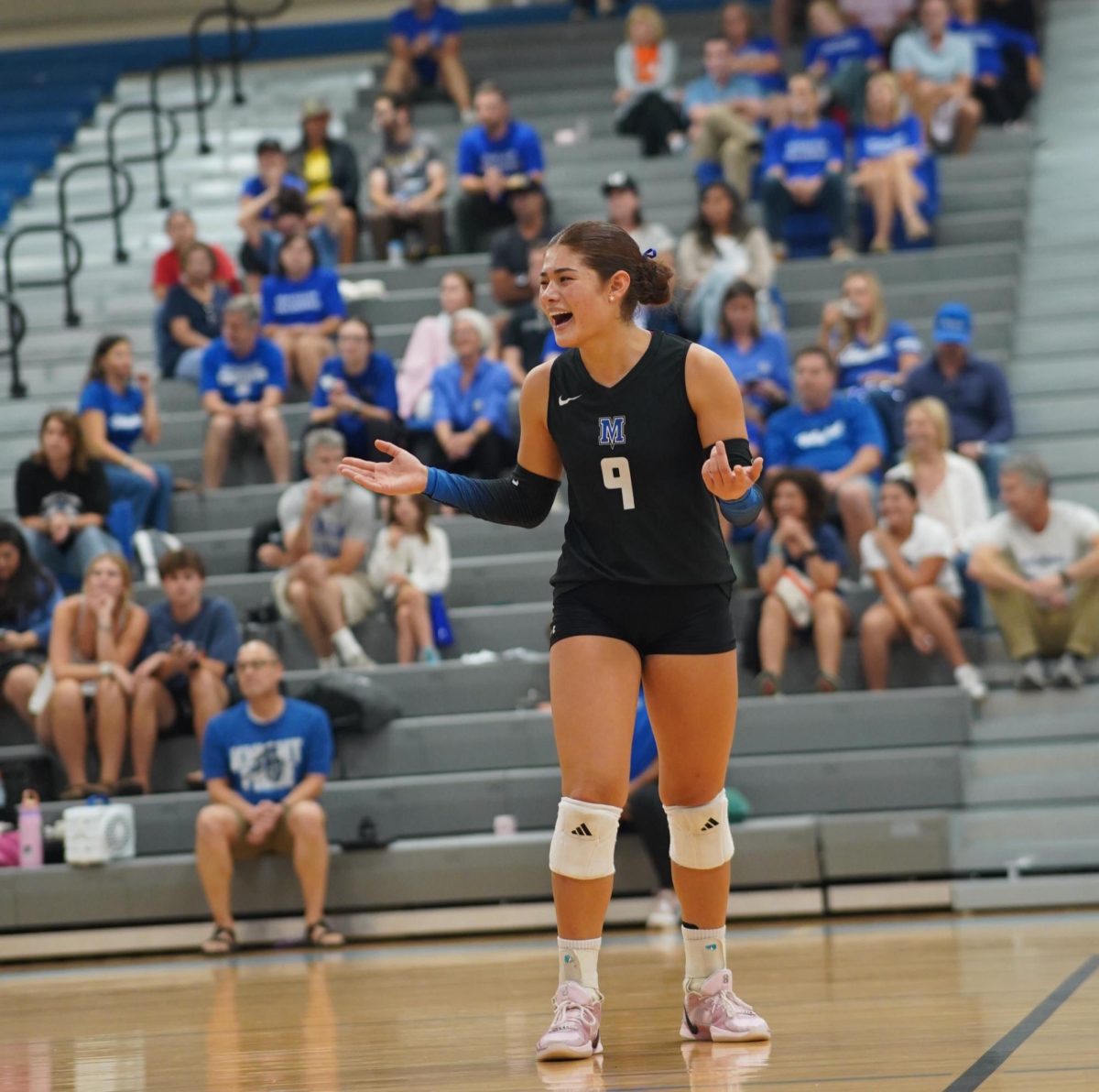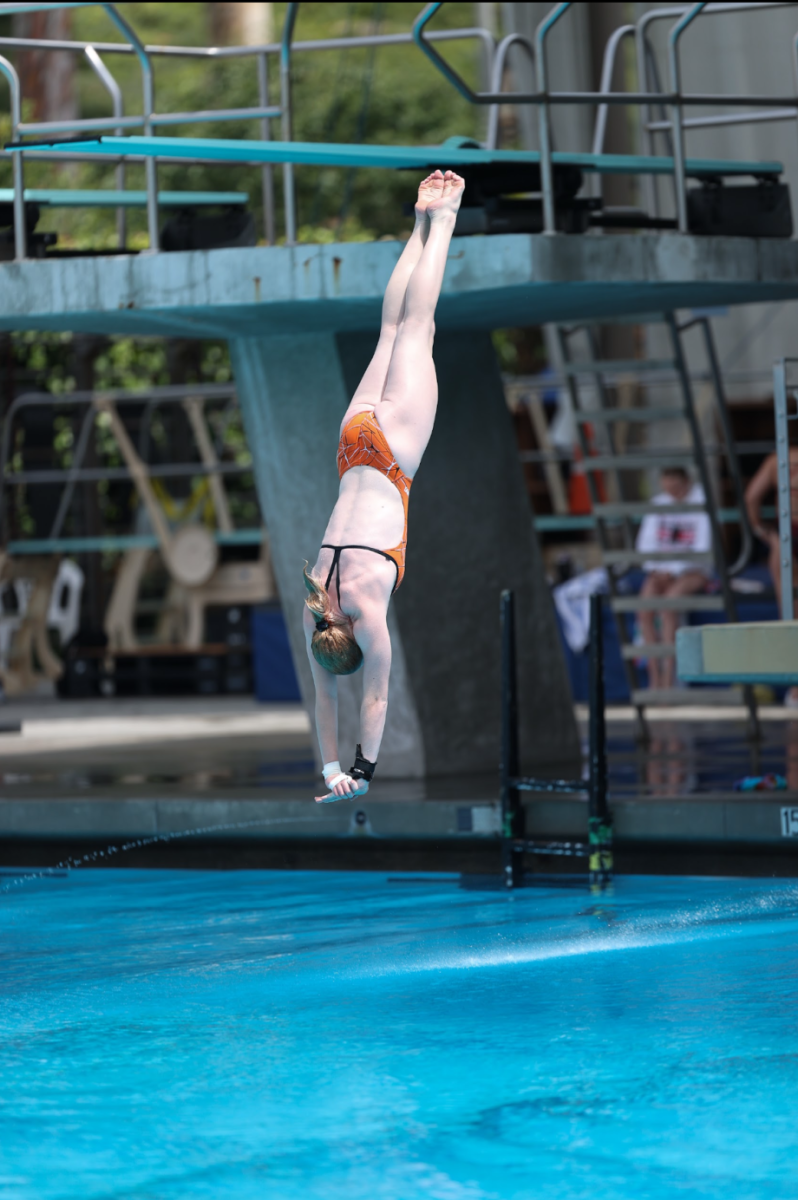During senior left tackle football player Braxton Bishop’s last Taco Shack game of his high school football career, his calf started cramping, preventing him from returning to the field for McCallum’s kickoff after scoring a touchdown.
“I didn’t want to let my team down,” Bishop said, “but I knew that it would be better to have someone else go in for me than risk cramping on the field.”
Bishop wasn’t the only player during McCallum’s game against Anderson High School who experienced heat-related injuries due to the weather conditions. While the temperature was 91 degrees at kickoff, the real-feel temperature was 99 degrees due to the 52% humidity.

While Austin wasn’t trapped in a heat dome this summer, Austin ISD changed the way its determines if it’s safe for students to practice and play outside due to continuous 90-plus degree days and the high humidity. Instead of using the temperature and heat index as it did last year, the district now uses the WetBulb Globe Temperature, or WBGT, heat index.
The WetBulb Globe Temperature is a measure of the heat in direct sunlight that takes into account wind speed, humidity, temperature, cloud cover and sun angle. This is distinct from the heat index, which is measured in the shade without taking into account wind and cloud cover.
Due to the new implementation of these rules, the McCallum tennis team’s first practice, on Aug. 28, happened one day before their first tournament of the season against the Anderson Trojans. Third-year head tennis coach Michael McLaughlin acknowledges how this cut the season short.
“We haven’t been able to work on some of the fundamentals or really practice a lot for the first match,” McLaughlin said. “We’ve got to be doing our best because we’ll be playing good competition.”
Along with not being able to practice before the tournament, the heat also prevented setting up the team ladder for who would be seeded first.
While McLaughlin wishes the tennis team could’ve had more time to practice together before the Knights played Anderson, he also acknowledges the dangers of playing in the heat.
“If it’s 100 degrees outside, on the court it could be 110 degrees,” McLaughlin said. “It’s actually very intense because you’re out on the concrete.”
During his three years as a coach, McLaughlin’s players haven’t suffered any heat-related injuries, but he has noticed how it affects him and his players physically.
“You know it takes a toll, especially for me because I’m not 20 years old,” McLaughlin said, “so I noticed that it affects me a lot more than it used to. The kids seem to do OK just a lot of complaining sometimes when it’s hot.”
In order to help keep the players cool and healthy, the tennis team has implemented different measures.
“We take a lot of water breaks and always have water out there,” McLaughlin said. “We even have a misting fan, so that’s going to help.”
In order to maximize the amount of practice the team is getting, team practices have been shifted to the morning starting at 7:15 as opposed to after school like last year.
While junior Elsie Smith is excited that the tennis season is starting, she also observed how practicing in the morning has affected her energy level throughout the rest of the day.
“Although I don’t mind morning practice it leaves me tired throughout the day,” Smith said. “Hopefully, with the weather cooling down, tennis will be more enjoyable but, for now, it’s been pretty hard with the heat.”
Because tennis is a year-round sport, the tennis team has to make adjustments now to ensure that they are getting the practice they need. Two other teams that aren’t as heavily affected by the changing of the heat guidelines due to the fact that their seasons aren’t until December are the girls and boys soccer teams.
For the boys head coach Nicholas Martin, the limited practice doesn’t impact the team long-term because of the fact that the soccer season doesn’t start until the winter, but it’s still frustrating, especially for evaluating new players.
“You want to go outside, but you want to be safe,” Martin said. “If it’s not safe to go outside, we lift in the weight room and then when we finish lifting, we do a study hall because there’s no extra space to do anything.”
When the team is allowed to go outside and practice, there is a level of understanding between the players that if you need water, you’re allowed to take a step back and hydrate.

“[Heat-related injuries are] why we always tell our boys if you ever need a drink, you never need to ask,” Martin said. “I tell them over and over again if they’re starting to feel the heat, tell me. If they are starting to feel the heat, we determine the severity of it and determine if they need to go sit in the shade or spray some water on their head and neck to cool them off.”
Jason Rich, the new girls soccer coach who used to coach the boys soccer team at Georgetown, also instills the same rule during his practices.
“It’s always been our rule that no matter what we’re doing, you can step off the field and go into the shade,” Rich said. “I have seen kids affected by the heat and get worn out by the heat and kids who need to step aside, get into the shade, get some water and even go inside. We’re always pretty clear that you have to take care of yourself out here.”
Even though the heat has made Rich’s first few weeks of practice plans difficult, he has taken the days that are too hot for the team to go outside to introduce himself, go over weight room protocols, and fundraising. Due to the cool temperatures during the week of Sept. 2, however, the girls soccer team was able to complete their first round of tryouts.
Looking to the future, Rich is ready and excited to start getting into a consistent practice routine when the weather permits.
“I would rather be out in the heat practicing just because I enjoy everything about it like setting things up, the teaching aspect and seeing kids get better,” Rich said. “I think if [we] get in the mentality of we’re going to practice no matter what as long as it’s safe, we’re going to have a successful season.”
Head athletic trainer Matt Johnson is one of the people who tells coaches if it’s safe for the team to practice outside that day. Trainers are required to take the WBGT 15 minutes before every outdoor activity and check it 30 minutes into the activity. Sometimes, due to this protocol, the coaches can be notified only a few minutes before practice is scheduled to start. Johnson points out that this is to ensure the health of all athletes is prioritized.
“Every year a football player dies during this time from the first part of practice and summer workouts to the first part of September,” Johnson said. “It’s very important that we are following the rules.”
To ensure the safety of all players, the University Interscholastic League has put into place more rules that the athletic training team is supposed to follow.
“Now UIL is finally saying, ‘OK, you need to have all these cautionary things like cold towels ready so that if that situation arises, there are remedies in place to prevent [athletes] from dying,’” Johnson said.
The AISD temperature guidelines also point out that cooling mechanisms have to be provided for all outdoor activities if the WetBulb Temperature measures above 80 degrees.
Experiencing a serious heat-related injury could lead to someone being more susceptible to having injuries again in the future, which is why Johnson encourages McCallum athletes to hydrate often.
“Hydrate today for tomorrow,” Johnson said. “It’s too hot, and you can’t catch up during practice.”








